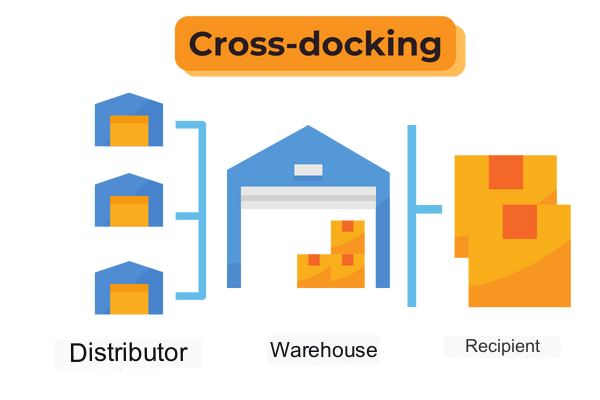Cross-docking - how it works, stages, types, advantages and disadvantages.
_2.png)
Cross-docking otherwise known as interdocking is a modern way to manage and distribute goods, thanks to which the storage process is reduced to a minimum. The delivery of the goods is planned in such a way that it is sent on to the customer immediately after taking over from the distributor. Such a solution allows e.g. for a significant reduction in order fulfillment time.
Interdocking, or simply speaking, reloading and separating products in the cargo space in the distribution center and transporting them to the final recipient. The process is characterized by the fact that the trading company usually orders large quantities of one type of goods from the distributor, which, after they hit the warehouse, will be sorted and sent to customers in smaller packages. In practice, the company buys goods from the distributor when an order from the customer arrives, thus avoiding long-term storage of goods in its warehouse.

Types of cross-docking
The process consists of several operations: planning, receipt of goods at the warehouse, verification of delivery, preparation of goods for further transport. There are several types of cross-docking, the simplest is the handling of full pallets. In this case, goods of one type are sent to the warehouse, which are already stacked on pallets. Then they are reloaded to another means of transport and sent directly to the customer. This type of cross-docking is most often used when transporting large-size goods. Another type, however, rarely used is the shipment of an order that has been completed by the supplier. This requires a very good knowledge of the assortment and the needs of the recipient. The most practical type of cross-docking seems to be a model in which the order is picked at the transshipment point. The downside, however, is the need to have a certain cargo space, where you can store some goods that have not set off for the recipient for a short time.
Advantages and disadvantages of cross-docking
Efficient use of warehouse space and cost reduction due to the lack of the need for an extensive warehouse, as the goods are supposed to be there only to prepare them for further shipment in smaller portions. Reduced costs are associated with no need to rent a warehouse. Thanks to this solution, more time is gained for the delivery of the order, and as a result, it reaches the customer faster. In this way, you can meet the expectations of modern customers. This is also related to the reduction of employment in the company. The reduction of service in inter-warehouse processes is also associated with a reduction in the reduction of pollutant emissions into the atmosphere. On the other hand, the disadvantages of such a logistic model are certain inconveniences related to the initial costs that must be invested in the proper preparation of the reloading place. For an efficient supply chain, it is also necessary to ensure the integration of systems at individual stages and the smooth flow of goods.
Cross-docking is one of many possibilities among supply chain management models. It is worth getting acquainted with all the ways to effectively plan the distribution of goods. To learn more, we encourage you to read our previous articles on e-commerce logistics and what the supply chain is all about. In the case of transshipment and distribution of goods, an appropriate plan of distribution of goods may also be useful. The Smartload application comes with help - soon we will also introduce the possibility of stacking goods in the warehouse! Follow us to not miss the news and stay up to date.